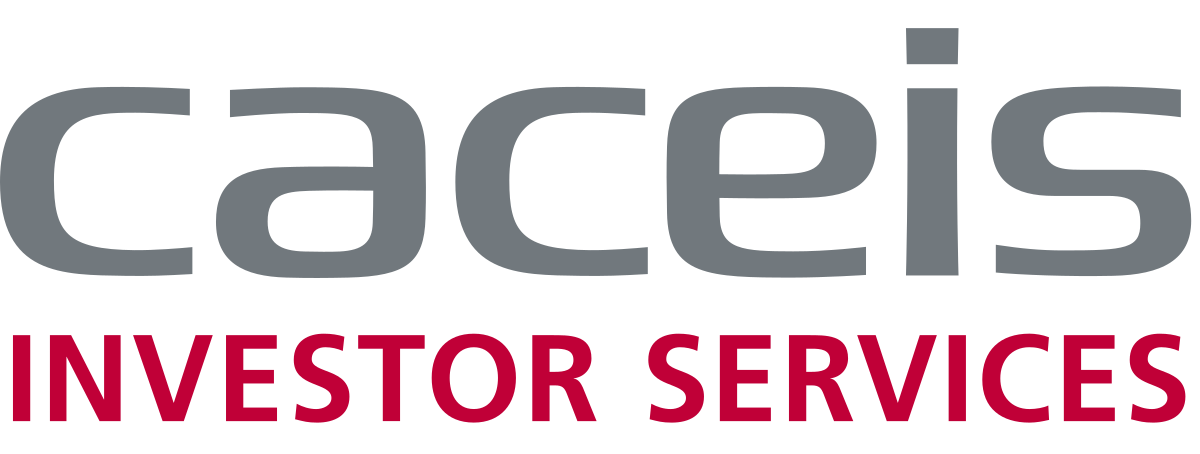
In this article, Alexandre GANNE (ESSEC Business School, Global Bachelor in Business Administration (GBBA), 2025) shares his professional experience as Depositary Control Auditor at CACEIS Bank.
About the company
CACEIS Bank is a leading European financial institution specializing in asset servicing. A subsidiary of Crédit Agricole and Santander, CACEIS provides custody, depositary, and fund administration services to institutional clients, management companies, and large corporates. The group supervises more than €2.3 trillion in assets under custody and over €3 trillion in assets under administration.
Logo of CACEIS Bank

Source: the company.
The Depositary Control team plays a critical role in investor protection, ensuring that asset managers operate in compliance with applicable regulations. It verifies the correct valuation of assets, control of financial ratios, and the conformity of transactions made on behalf of the funds.
My internship
My missions
As a Depositary Control Auditor, my primary responsibility was to conduct thematic audits on European investment management companies with assets exceeding €5 billion. I focused on key control areas such as asset valuation, regulatory ratios, and Value at Risk (VaR). I also carried out analytical reports on current macroeconomic trends to assess their potential impact on asset management practices. Additionally, I worked on recurring and ad hoc studies, such as evaluating the impact of the ongoing real estate crisis on real estate investment funds (REITs, OPCIs, SCPI), analyzing their asset exposure, liquidity constraints, and valuation resilience.
Required skills and knowledge
This role required a solid understanding of financial regulations and investment vehicles, as well as proficiency in the Microsoft Office suite, especially Excel for financial modeling and reporting. Soft skills such as rigor, autonomy, and teamwork were crucial to ensure the reliability of our audit reports and smooth communication with asset managers. A high level of professionalism in client communication was essential, particularly when addressing sensitive compliance issues with senior representatives of management companies.
What I learned
This apprenticeship allowed me to develop a comprehensive understanding of the regulatory ecosystem of European asset management. I acquired expertise in risk control, asset valuation methodologies, and fund auditing practices. I also improved my organizational skills, learning to manage several audit missions simultaneously while respecting strict deadlines and reporting requirements.
Financial concepts related to my internship
I present below three financial concepts related to my internship: asset valuation, Value at Risk (VaR), and key regulatory ratios.
Asset Valuation
Asset valuation is the process of determining the fair market value of assets held in an investment portfolio. This is a critical step in calculating the Net Asset Value (NAV) of a fund. In practice, I reviewed how management companies priced listed assets (using mark-to-market techniques) and unlisted assets (using models like discounted cash flows or multiples comparison). I ensured that valuation methods adhered to regulatory guidelines and were consistently applied, especially for complex or illiquid assets.
Value at Risk (VaR)
Value at Risk (VaR) quantifies the potential maximum loss of a portfolio under normal market conditions over a specific time period and confidence level (e.g., 99% over 10 days). I assessed the robustness of VaR models used by asset managers, ensuring they incorporated appropriate volatility measures, stress scenarios, and backtesting. VaR helped us monitor whether funds stayed within authorized market risk limits and provided a quantitative basis for risk-based oversight.
Regulatory Ratios
Regulatory ratios include leverage, liquidity, and concentration limits imposed by the AIFM and UCITS directives. During audits, I verified that asset managers respected these ratios daily and that breaches were properly justified and resolved. This involved reviewing internal control mechanisms and examining historical data to detect anomalies or patterns of non-compliance, thereby reinforcing the protection of investor interests.
Why should I be interested in this post?
This internship is particularly valuable for students interested in financial regulation, risk oversight, or asset management. Beyond that, it is a gateway to multiple career paths in finance. I am honored to be the fifth ESSEC student to hold this position at CACEIS Bank. Many of my predecessors went on to successful careers in investment banking, private equity, or consulting, demonstrating that this experience builds a strong foundation even beyond the field of risk management. Being part of this legacy pushes me to give my best and uphold the high standards set by those who came before me.
Related posts on the SimTrade blog
▶ All posts about Professional experiences
▶ Clara PINTO Investment is a flighty bird which needs to be controlled
▶ Jayati WALIA Value at Risk
▶ Andrea ALOSCARI Valuation methods
▶ Akshit GUPTA Regulations in financial markets
Useful resources
EFAMA – European Fund and Asset Management Association
Autorité des Marchés Financiers (AMF)
About the author
The article was written in May 2025 by Alexandre GANNE (ESSEC Business School, Global Bachelor in Business Administration (GBBA) –2025).
